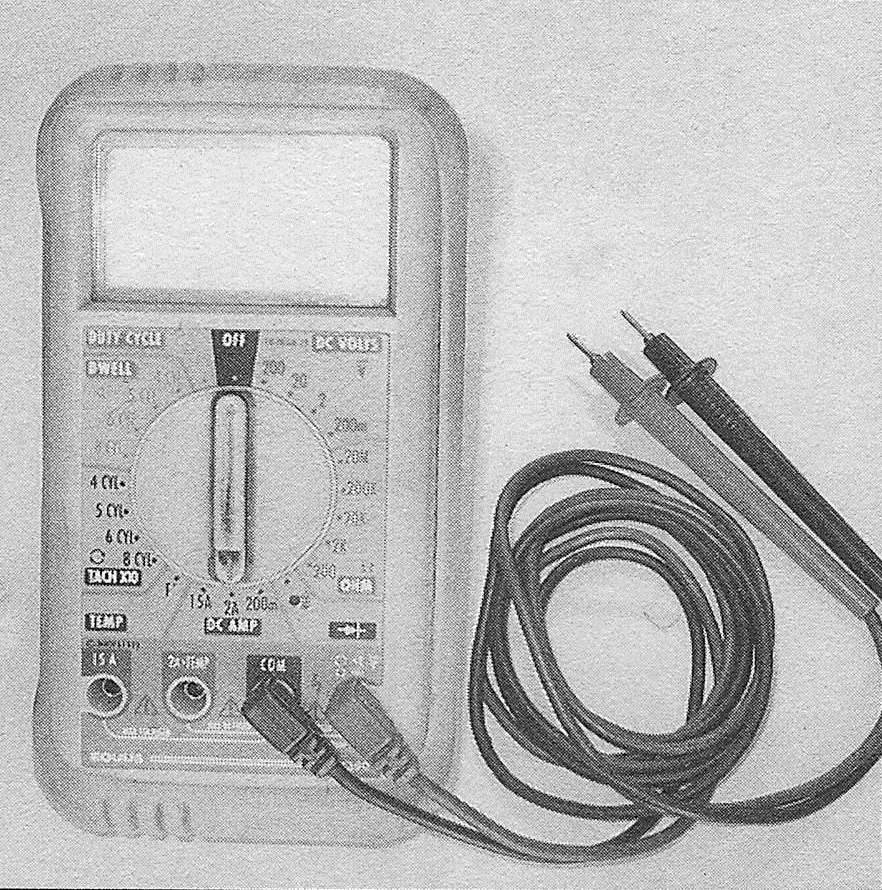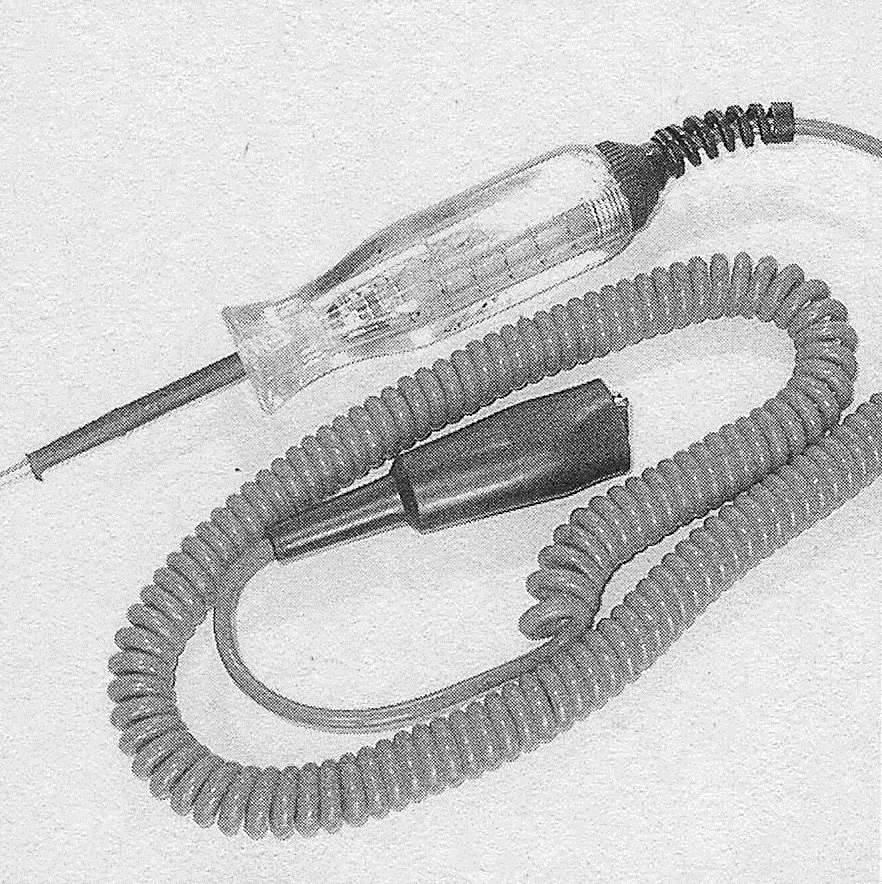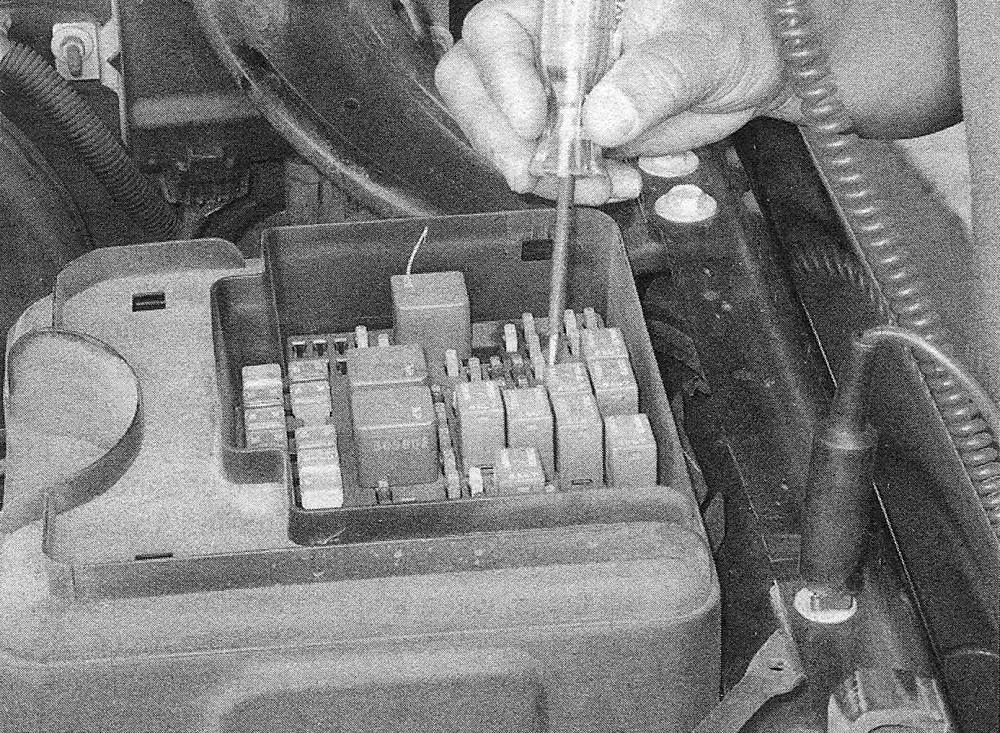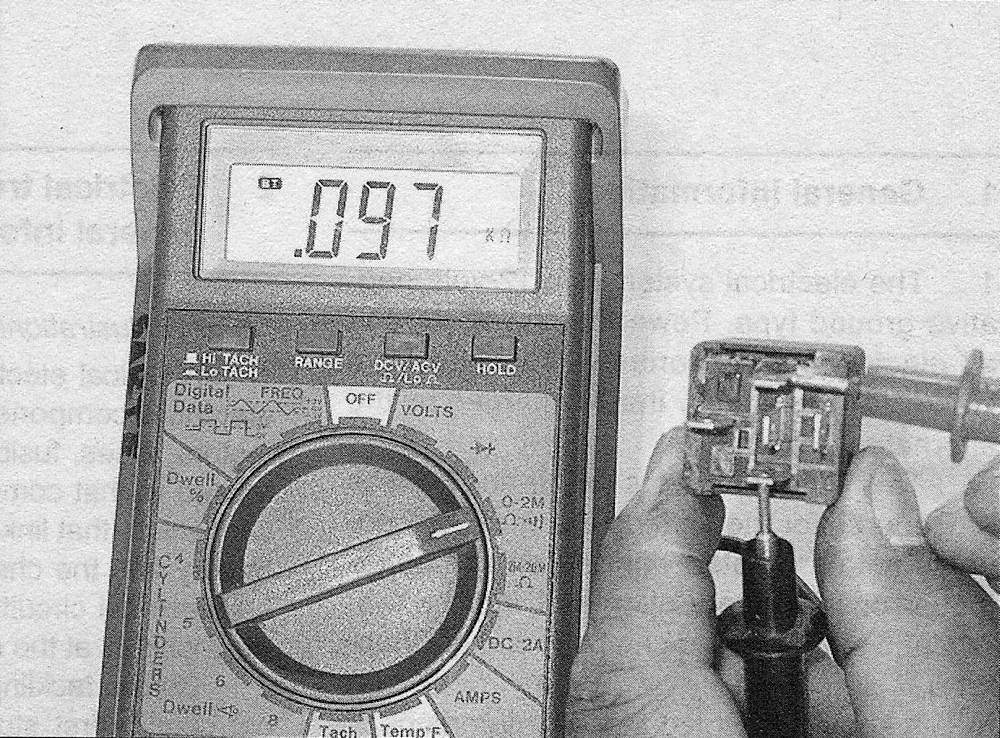Electrical troubleshooting — general information
1. A typical electrical circuit consists of an electrical component, any switches, relays, motors, fuses, fusible links or circuit breakers related to that component and the wiring and connectors that link the component to both the battery and the chassis. To help you pinpoint an electrical circuit problem, wiring diagrams are included at the end of this Chapter.
2. Before tackling any troublesome electrical circuit, first study the appropriate wiring diagrams to get a complete understanding of what makes up that individual circuit. Trouble spots, for instance, can often be narrowed down by noting if other components related to the circuit are operating properly. If several components or circuits fail at one time, chances are the problem is in a fuse or ground connection, because several circuits are often routed through the same fuse and ground connections.
3. Electrical problems usually stem from simple causes, such as loose or corroded connections, a blown fuse, a melted fusible link or a failed relay. Visually inspect the condition of all fuses, wires and connections in a problem circuit before troubleshooting the circuit.
4. If test equipment and instruments are going to be utilized, use the diagrams to plan ahead of time where you will make the necessary connections in order to accurately pinpoint the trouble spot.
5. The basic tools needed for electrical troubleshooting include a circuit tester or voltmeter (a 12-volt bulb with a set of test leads can also be used), a continuity tester, which includes a bulb, battery and set of test leads, and a jumper wire, preferably with a circuit breaker incorporated, which can be used to bypass electrical components (see illustrations). Before attempting to locate a problem with test instruments, use the wiring diagram(s) to decide where to make the connections.
2.5a the most useful tool for electrical troubleshooting is a digital multimeter that can check volts, amps, and test continuity

2.5b A test light is a very handy tool for checking voltage

Voltage checks
6. Voltage checks should be performed if a circuit is not functioning properly. Connect one lead of a circuit tester to either the negative battery terminal or a known good ground. Connect the other lead to a connector in the circuit being tested, preferably nearest to the battery or fuse (see illustration). If the bulb of the tester lights, voltage is present, which means that the part of the circuit between the connector and the battery is problem free. Continue checking the rest of the circuit in the same fashion. When you reach a point at which no voltage is present, the problem lies between that point and the last test point with voltage. Most of the time the problem can be traced to a loose connection.
Note: Keep in mind that some circuits receive voltage only when the ignition key is in the Accessory or Run position.
2.6 In use, a basic test light’s lead is clipped to a known good ground, then the pointed probe can test connectors, wires or electrical sockets — if the bulb lights, the part being tested has battery voltage

Finding a short
7. One method of finding shorts in a circuit is to remove the fuse and connect a test light or voltmeter in place of the fuse terminals. There should be no voltage present in the circuit. Move the wiring harness from side-to-side while watching the test light. If the bulb goes on, there is a short to ground somewhere in that area, probably where the insulation has rubbed through. The same test can be performed on each component in the circuit, even a switch.
Ground check
8. Perform a ground test to check whether a component is properly grounded. Disconnect the battery and connect one lead of a continuity tester or multimeter (set to the ohms scale), to a known good ground. Connect the other lead to the wire or ground connection being tested. If the resistance is low (less than 5 ohms), the ground is good. If the bulb on a self-powered test light does not go on, the ground is not good.
Continuity check
9. A continuity check is done to determine if there are any breaks in a circuit — if it is passing electricity properly. With the circuit off (no power in the circuit), a self-powered continuity tester or multimeter can be used to check the circuit. Connect the test leads to both ends of the circuit (or to the power end and a good ground), and if the test light comes on the circuit is passing current properly (see illustration). If the resistance is low (less than 5 ohms), there is continuity; if the reading is 10,000 ohms or higher, there is a break somewhere in the circuit. The same procedure can be used to test a switch, by connecting the continuity tester to the switch terminals. With the switch turned On, the test light should come on (or low resistance should be indicated on a meter).
2.9 With a multimeter set to the ohms scale, resistance can be checked across two terminals — when checking for continuity, a low reading indicates continuity, a high reading indicates lack of continuity

Finding an open circuit
10. When diagnosing for possible open circuits, it is often difficult to locate them by sight because the connectors hide oxidation or terminal misalignment. Merely wiggling a connector on a sensor or in the wiring harness may correct the open circuit condition. Remember this when an open circuit is indicated when troubleshooting a circuit. Intermittent problems may also be caused by oxidized or loose connections.
11. Electrical troubleshooting is simple if you keep in mind that all electrical circuits are basically electricity running from the battery, through the wires, switches, relays, fuses and fusible links to each electrical component (light bulb, motor, etc.) and to ground, from which it is passed back to the battery. Any electrical problem is an interruption in the flow of electricity to and from the battery.